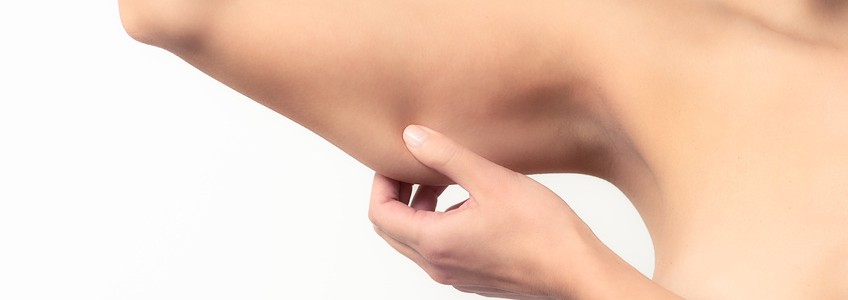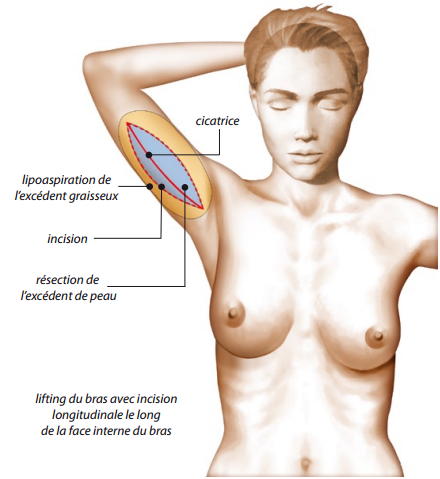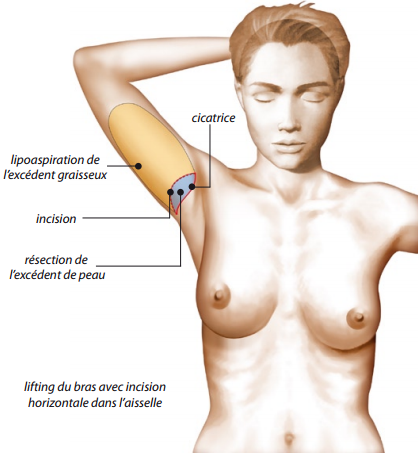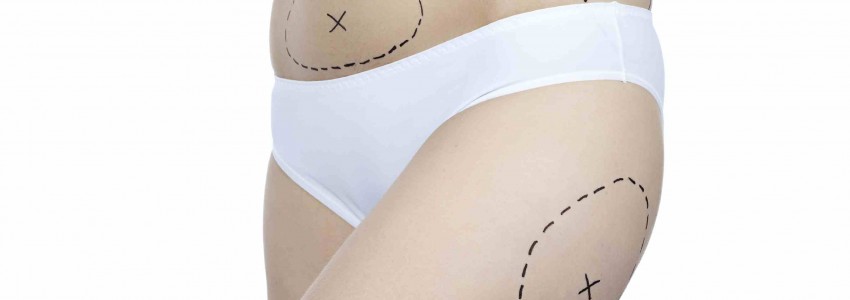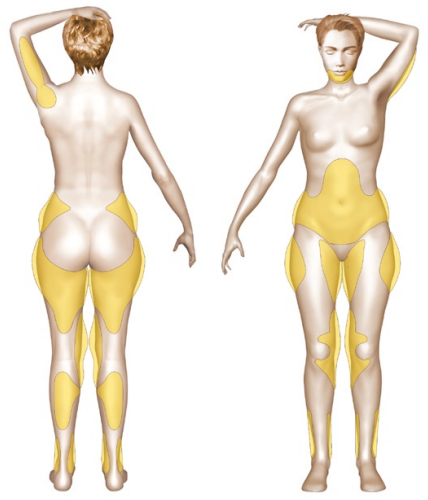DEFINITION, AIMS AND PRINCIPLES :
If there relaxation on the inner thigh, isolated liposuction will be insufficient to improve the aesthetic appearance in this area. Only the stretching of the skin can correct the defect: the crural lifting or lifting of the inner thigh.
The surgery aims to remove excess skin, reduce the underlying fatty infiltration, and fix the skin deep.
BEFORE THE SURGERY :
A preoperative check-up is made.
The anaesthesiologist will be seen in consultation prior to surgery.
It is strongly recommended to give up smoking befire the surgery because it may delay healing.
No medication containing aspirin will be taken for 10 days before surgery.
HOSPITAL STAY AND TYPE OF ANESTHESIA
Type of anesthesia : this surgery can be performed under general anesthesia or anesthesia.
Hospital stay : It requires 1 to 3 days admission in hospital.
THE SURGERY :
A liposuction can be associated if there is a significant fatty infiltration.
The excess skin is removed and the remaining skin is stretched and fixed in depth of the aponeurotic ligament through stitches.
The scar will be hidden in a natural crease and thus will be discrete.
At the end of the surgery,placing a lipo-panty is required.
AFTER THE OPERATION: POSTOPERATIVE CARE AND FOLLOW-UP
Edema (swelling) and some bruising (bruises) that will take 10 to 20 days to resorb may appear.
Postoperative pain is usually little intense. A 1-to 3- week sick leave is to be considered starting from the 6th week following the surgery.
THE RESULT :
It will be appreciated in a span of 6 to 12 months after surgery.
Correction fatty infiltration and cutaneous relaxation is generally observed, clearly improving the morphology of the thigh.The scars are usually discrete, since they are consolidated in a natural crease.
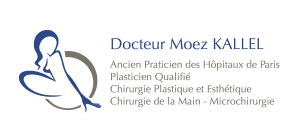
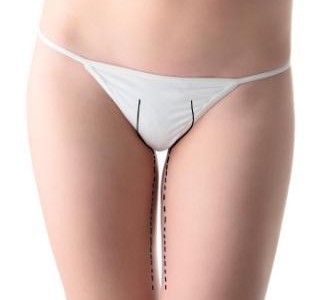
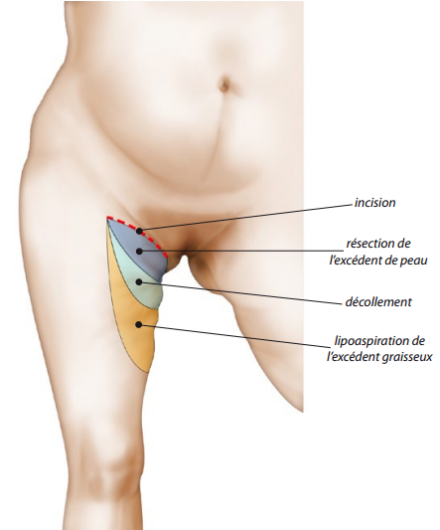
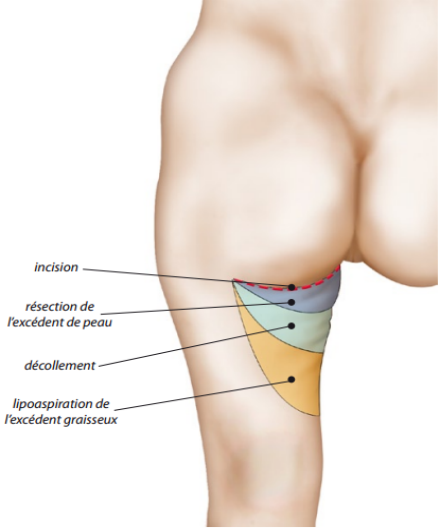
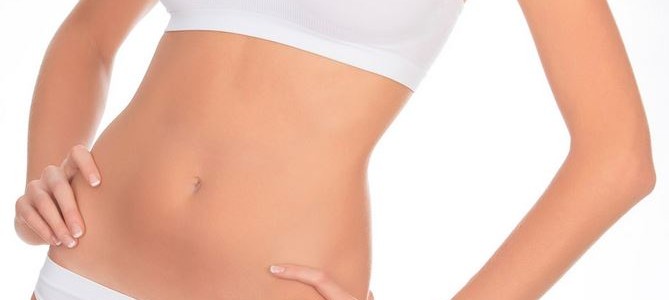
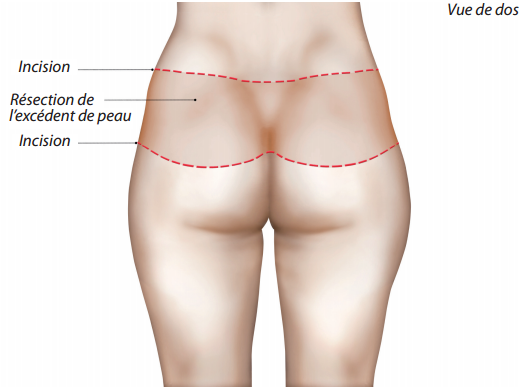 Preoperative markings : Essential to proper positioning and symmetry of the scar
Preoperative markings : Essential to proper positioning and symmetry of the scar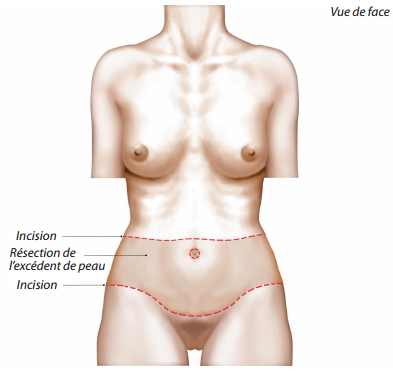

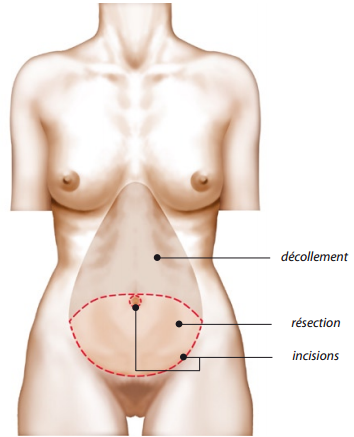
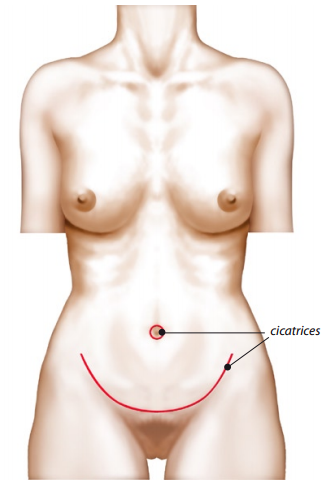 Extended abdominal plasty
Extended abdominal plasty